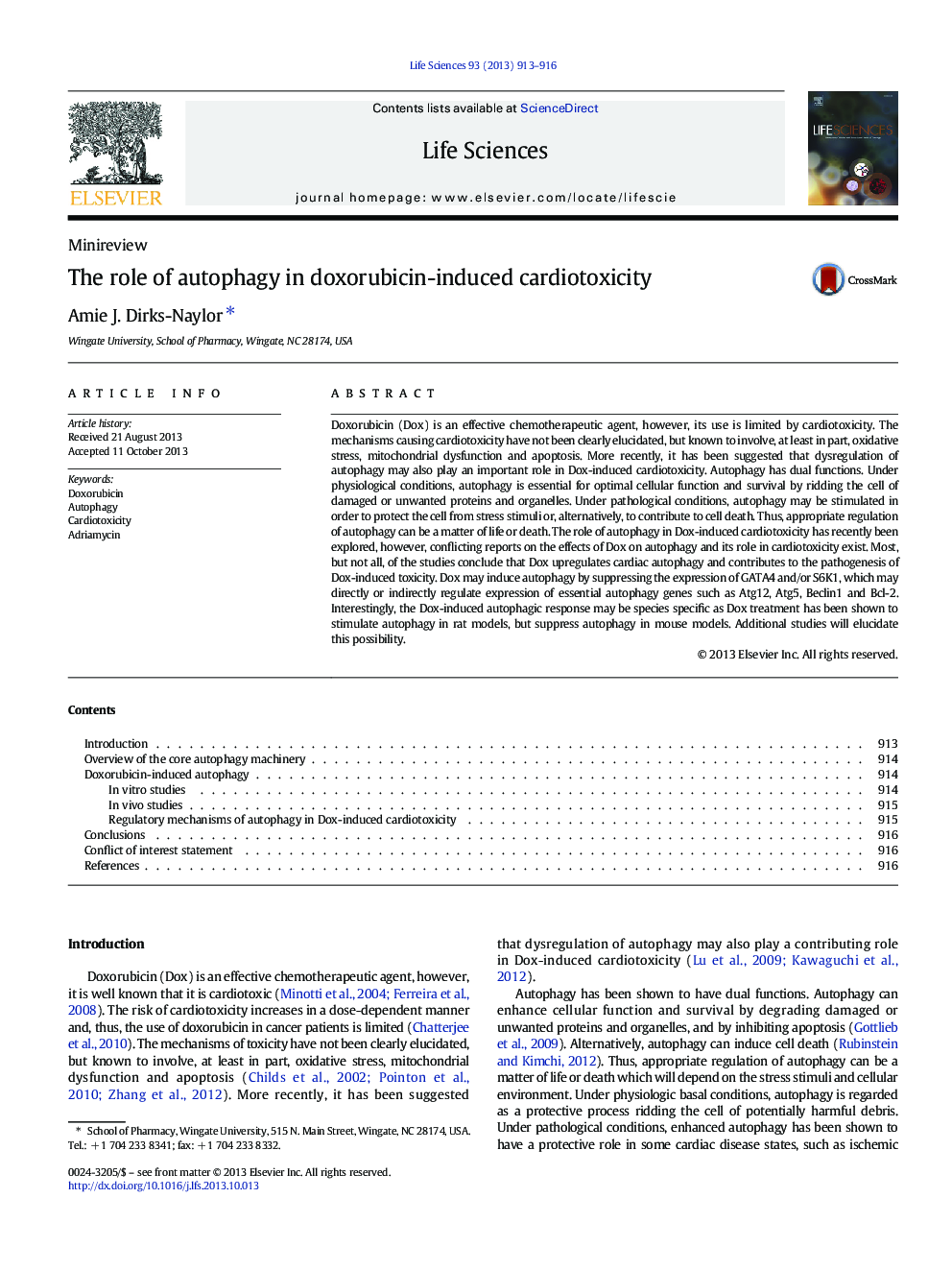| کد مقاله | کد نشریه | سال انتشار | مقاله انگلیسی | نسخه تمام متن |
|---|---|---|---|---|
| 2551467 | 1124731 | 2013 | 4 صفحه PDF | دانلود رایگان |

Doxorubicin (Dox) is an effective chemotherapeutic agent, however, its use is limited by cardiotoxicity. The mechanisms causing cardiotoxicity have not been clearly elucidated, but known to involve, at least in part, oxidative stress, mitochondrial dysfunction and apoptosis. More recently, it has been suggested that dysregulation of autophagy may also play an important role in Dox-induced cardiotoxicity. Autophagy has dual functions. Under physiological conditions, autophagy is essential for optimal cellular function and survival by ridding the cell of damaged or unwanted proteins and organelles. Under pathological conditions, autophagy may be stimulated in order to protect the cell from stress stimuli or, alternatively, to contribute to cell death. Thus, appropriate regulation of autophagy can be a matter of life or death. The role of autophagy in Dox-induced cardiotoxicity has recently been explored, however, conflicting reports on the effects of Dox on autophagy and its role in cardiotoxicity exist. Most, but not all, of the studies conclude that Dox upregulates cardiac autophagy and contributes to the pathogenesis of Dox-induced toxicity. Dox may induce autophagy by suppressing the expression of GATA4 and/or S6K1, which may directly or indirectly regulate expression of essential autophagy genes such as Atg12, Atg5, Beclin1 and Bcl-2. Interestingly, the Dox-induced autophagic response may be species specific as Dox treatment has been shown to stimulate autophagy in rat models, but suppress autophagy in mouse models. Additional studies will elucidate this possibility.
Figure optionsDownload high-quality image (81 K)Download as PowerPoint slide
Journal: Life Sciences - Volume 93, Issue 24, 5 December 2013, Pages 913–916